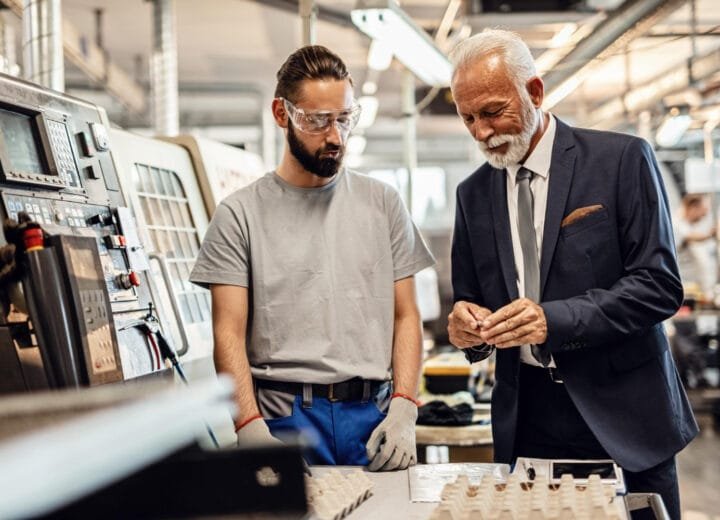Faber Infinite has been working in the domain of Organizational Transformation, Operational Excellence and Business Excellence. In order to graduate towards excellence, manufacturing organizations should work towards basic stability of 4Ms – Man, Method, Material and Machine.
Its tried and tested fact, that equipment/ machine maintenance can be improved via deploying TPM (Total Productive Maintenance) methodology, which can lead the organization towards the goal of continuous improvement. One of our esteemed clients in Gujarat, India was facing challenges in terms of equipment performance which was blocking the continuous improvement journey of the organization. Hence, the client team along with team Faber Infinite introduced Autonomous Maintenance, one of the pillars of TPM (Total Productive Maintenance) framework to enhance the Operational Excellence journey and continual improvement culture on the shop floor.
Few glimpses of Autonomous Maintenance – Step 1: Initial Cleaning
Total Productive Maintenance (TPM) is a Japanese framework which is globally accepted and proven. The origin of TPM can be traced back to 1951 when preventive maintenance was introduced in Japan by the Japanese Institute of Plant Maintenance (JIPM). TPM framework involves a defined concept for maintaining plants and equipment. The goal of the TPM program is to markedly increase production while, at the same time, increasing employee morale and job satisfaction. This method further tunes up existing processes and equipment by reducing mistakes and accidents. TPM has eight pillars which focuses on proactive and preventative techniques for improving equipment reliability and stability.
When companies begin to implement Total Productive Maintenance (TPM) they often start by piloting Autonomous Maintenance (AM). This is understandable as Autonomous Maintenance is one of the key distinguishing features of TPM Autonomous Maintenance is the second of the eight pillars of TPM. It is also known as JISHU HOZEN in Japanese. It follows a structured approach to increase the skill levels of personnel so that they can understand, manage and improve their equipment and processes. The major goal is to change operators from being reactive to working in a more proactive way, to achieve optimal conditions that eliminate minor equipment stops as well as reducing defects and breakdowns.
BENEFITS OF AUTONOMOUS MAINTENANCE:
Deployment of Autonomous maintenance will bring the following benefits to any organization:
– Improvement in Overall Equipment Effectiveness (OEE)
– Reduction in performance loss
– Increase in equipment availability
– Improvement to employee engagement
– Increase in capability levels.
Today, with competition in industry at an all-time high, TPM is one of the key framework which stands between success and failure of equipment/ machine/ asset management for any organization in its journey of continuous improvement.
Ready to revolutionize your equipment’s performance through autonomous maintenance? Fill out the form below to gain invaluable insights and techniques that will enhance efficiency, minimize downtime, and maximize productivity. Don’t miss out on this opportunity to optimize your operations and stay ahead of the competition!
Complied by :- Faber Raveena Rathi







